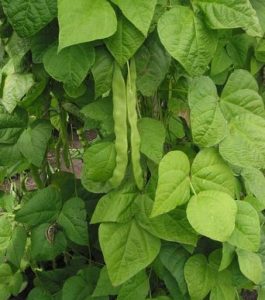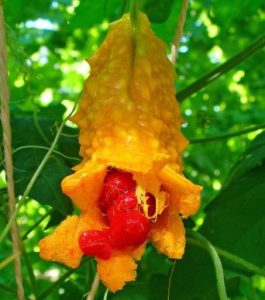 Common Name: Green Bean
Common Name: Green Bean
Description
Phaseolus vulgaris, the common bean (also known as the string bean, field bean, flageolet bean, French bean, garden bean, green bean, haricot bean, pop bean, or snap bean), is a herbaceous annual plant grown worldwide for its edible dry seed (known as just “beans”) or unripe fruit (green beans). Its leaf is also occasionally used as a vegetable and the straw as fodder. Its botanical classification, along with other Phaseolus species, is as a member of the legume family Fabaceae, most of whose members acquire the nitrogen they require through an association with rhizobia, a species of nitrogen-fixing bacteria.
The common bean is a highly variable species that has a long history of cultivation. All wild members of the species have a climbing habit, but many cultivars are classified as “bush beans” or “pole beans”, depending on their style of growth. These include the kidney bean, the navy bean, the pinto bean, and the wax …Read more
References
Switchboard
Wikipedia
Month: March 2013
Musa balbisiana
 Common Name: Bananas
Common Name: Bananas
Description
Musa balbisiana is a species of wild banana native to eastern South Asia, northern Southeast Asia, and southern China. It is one of the ancestors of modern cultivated bananas, along with Musa acuminata. It was first scientifically described in 1820 by the Italian botanist Luigi Aloysius Colla. It grows lush leaves in clumps with a more upright habit than most cultivated bananas. Flowers grow in inflorescences coloured red to maroon. The fruit are between blue and green. They are considered inedible because of the seeds they contain. It may be assumed that wild bananas were cooked and eaten or agriculturalists would not have developed the cultivated banana. Seeded Musa balbisiana fruit are called butuhan (‘with seeds’) in the Philippines, and kluai tani in Thailand. Natural parthenocarpic clones occur through polyploidy and produce edible bananas, examples of which are wild saba bananas. . . . .Read more
References
Switchboard
Wikipedia
Musa acuminata AAA Group
 Common Name: Bananas
Common Name: Bananas
Description
Musa acuminata is an evergreen perennial, not a tree. The trunk (known as the pseudostem) is made of tightly packed layers of leaf sheaths emerging from completely or partially buried corms.
The inflorescence grows horizontally or obliquely from the trunk. The individual flowers are white to yellowish-white in color and are negatively geotropic (that is, growing upwards and away from the ground). Both male and female flowers are present in a single inflorescence. Female flowers are located near the base (and develop into fruit), and the male flowers located at the tipmost top-shaped bud in between leathery bracts. . . . .Read more
References
Switchboard
Wikipedia
Momordica charantia
 Common Name: Bittergourd
Common Name: Bittergourd
Description
Momordica charantia, known as bitter melon, bitter gourd, bitter squash, or balsam-pear in English, has many other local names. Goya from Okinawan and karela from Sanskrit are also used by English-language speakers and pavakai in Tamil.
It is a tropical and subtropical vine of the family Cucurbitaceae, widely grown in Asia, Africa, and the Caribbean for its edible fruit, which is extremely bitter. Its many varieties differ substantially in the shape and bitterness of the fruit. This fruit is known as “Pare” (paray) in Indonesia and is widely grown and fertile throughout the land of Indonesia. . . . .Read more
References
Switchboard
Wikipedia